DomainMCF
Conference Papers
Maptek Data System
Maptek Compute Framework
Maptek Orchestration Environment
Join our early access program to unlock value for your organisation.
Drill & blast management
Interconnected mine scheduling
Reliable proximity awareness underground
Dynamic survey surface updates
3D mine planning & geological modelling
Streamlined geological modelling workflow
Machine learning assisted domain modelling
Material tracking & reconciliation systems
3D laser scanning & imaging
Point cloud processing & analysis
LiDAR-based stability & convergence monitoring
Derive value from airborne or mobile sensor data

Conference Papers
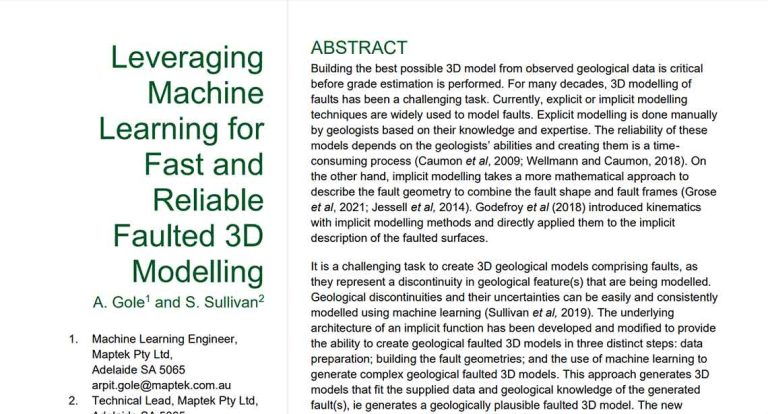
Building the best possible 3D model from observed geological data is critical before grade estimation is performed. For many decades, 3D modelling of faults has been a challenging task. Currently, explicit or implicit modelling techniques are widely used to model faults.
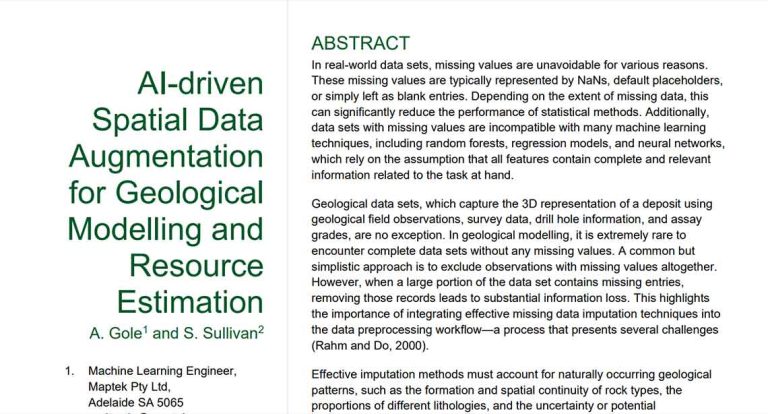
In real-world data sets, missing values are unavoidable for various reasons. These missing values are typically represented by NaNs, default placeholders, or simply left as blank entries. Depending on the extent of missing data, this can significantly reduce the performance of statistical methods.
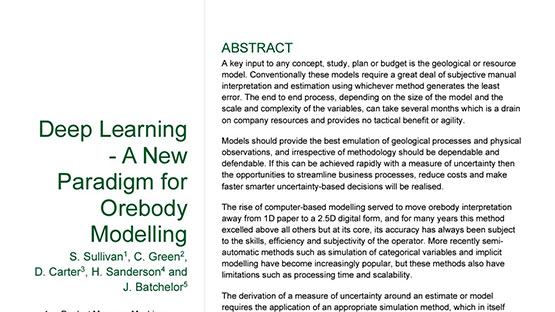
This 2019 paper introduces you to orebody modelling of the future. Learn how machine learning allows rapid generation of domained orebody models, including the estimation of multiple numeric variables and uncertainties, directly from drillhole data.
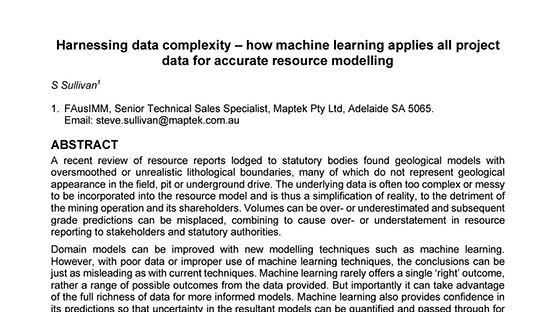
This paper discusses the factors accentuating complexity in deposit modelling: data diversity, structural controls, chemistry, data volumes, process workflows and external non-geological constraints. A case study illustrates the risk of ignoring complexity, which can result in an overly simplified geological model.
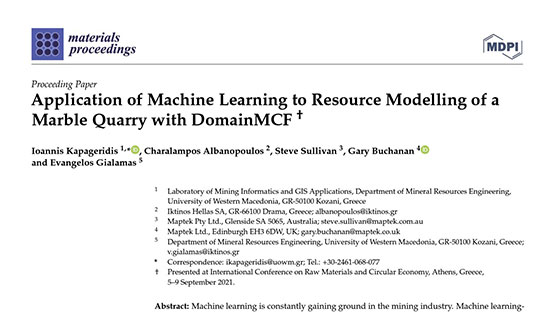
This 2021 paper outlines the DomainMCF modelling approach to the spatial distribution of marble quality categorisation parameters and compares it to marble product classifications generated by the conventional estimation method.
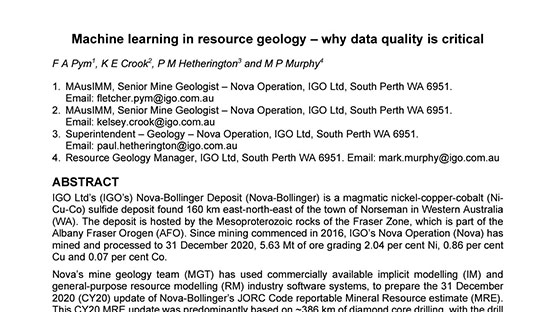
This paper outlines the results of the Nova-Bollinger modelling trial conducted by the mine geology team for mineral resource estimation. Advantages and disadvantages of implicit modelling and machine learning methods for preparing mineral resource estimation domains are covered.
We use cookies to enhance your browsing experience and analyse our traffic. By clicking "Accept all", you consent to our use of cookies. You can customise your cookie preferences by clicking 'Customise Preferences'.
We use cookies to enhance your browsing experience and analyse our traffic.
Our website may store cookies on your computer in order to improve and customise your future visits to the website. By using cookies, we can track information about your usage of the site and improve your experience with anonymous and aggregated user data.
Review our Privacy PolicyEssential for the website's functionality, without which the site cannot operate smoothly.
Remember user preferences and choices to provide a more personalized experience.
Collect data on how users interact with the website, helping to improve user experience.
Used to deliver targeted advertisements to users based on their browsing behavior and preferences.